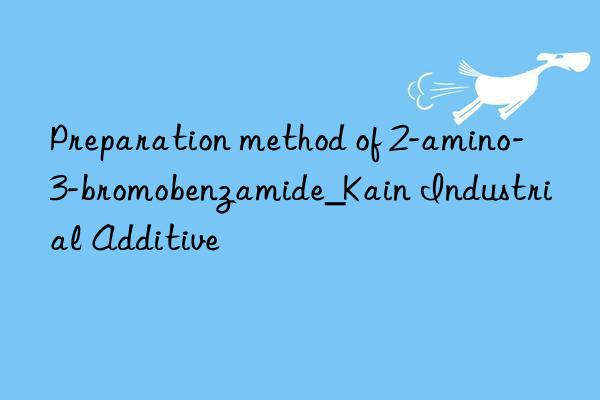
background and overview[1]
2-amino-3-bromobenzamide can be used as a pharmaceutical synthesis intermediate. if 2-amino-3-bromobenzamide is inhaled, move the patient to fresh air; if skin contact occurs, take off contaminated clothing, rinse the skin thoroughly with soap and water, and seek medical attention if you feel unwell; if in case of eye contact, separate eyelids, rinse with running water or saline, and seek medical attention immediately; if ingested, rinse mouth immediately, do not induce vomiting, and seek medical attention immediately.
preparation[1]
the preparation of 2-amino-3-bromobenzamide is as follows:
method 1: to a solution of 2-amino-3-bromobenzoic acid (0.5g, 2.3mmol) in dmf (5ml) at room temperature was added hydroxybenzotriazole (0.46g, 3.0mmol), 1-ethyl 3-(3-dimethylaminopropyl)carbodiimide (0.53g, 2.8mmol), ammonium chloride (0.5g, 9.7mmol) and diisopropylethylamine (1.7ml, 9.7mmol) ). the mixture was stirred with n2 and stirred for 6 hours. the mixture was poured into water and extracted with etoac (3 x 50 ml). the combined extracts were washed with brine (2 x 20 ml), dried over mgso4, filtered, and concentrated under reduced pressure. the residue was treated with dcm (10 ml) to give a precipitate, which was collected by filtration and dried to give 2-amino-3-bromobenzamide as a pale pink solid (0.42 g, 84%). lcms(esi)m/z215/217(m+h)+.
method 2: reflux the mixture of 2-amino-3-iodobenzoic acid (1.12g) and thionyl chloride (3.11ml) for 1 hour. the mixture was cooled, concentrated and co-evaporated twice with toluene. the dichloromethane solution of the residue was added dropwise to 28% ammonia solution, and then the resulting powder was collected, washed with water and dried under vacuum to obtain 2-amino-3-bromobenzamide, mass (esi): 239.1 (m+) + na)
main reference materials
[1](us20120053174)quinazolinecompoundsandmethodsofusethereof
[2](wo2002048117)quinazolinonederivatives

 微信扫一扫打赏
微信扫一扫打赏

